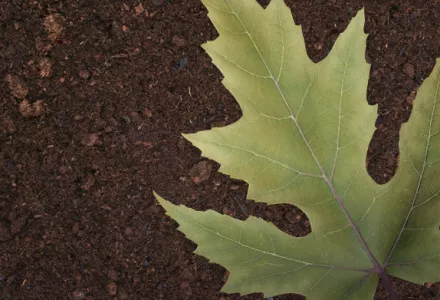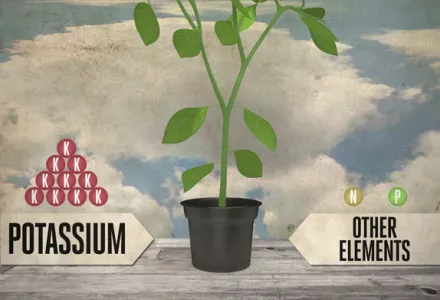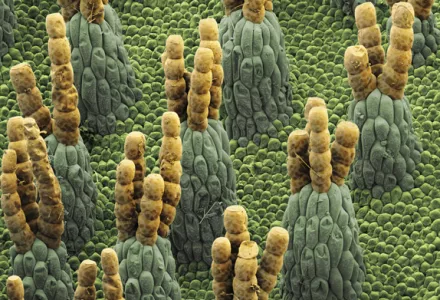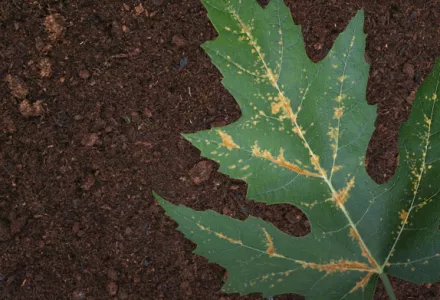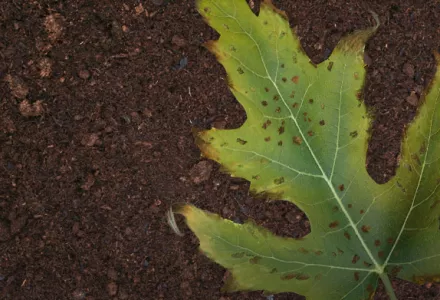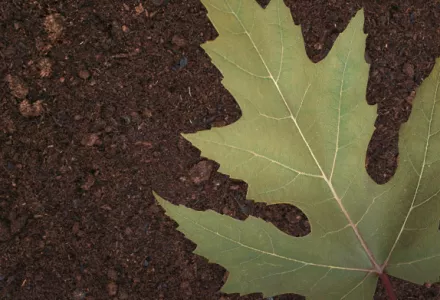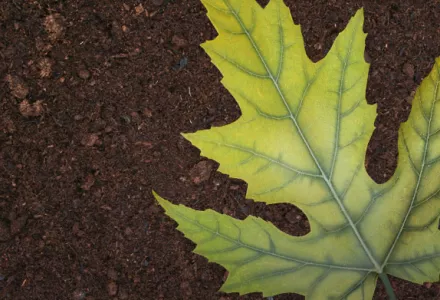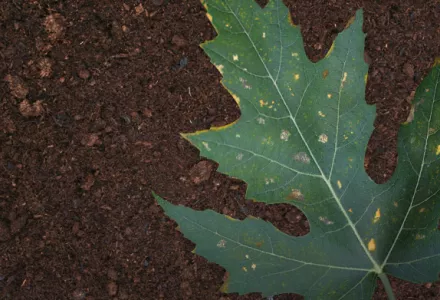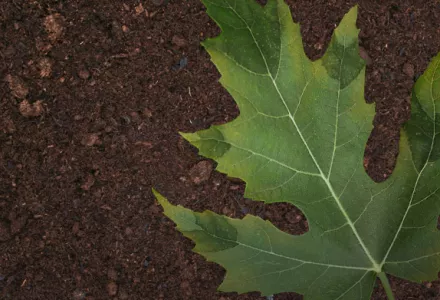Calcium occurs throughout the entire plant. It is used for many of the life processes in the plant; however, calcium is most important for the growth process. It has a regulating effect in the cells and contributes to the stability of the plant1. Plants have two transportation systems at their disposal: the xylem (from roots to top) and the phloem (from leaf to other leaves and roots). Most nutrients can be transported through both systems; however, for calcium this is not possible.
Calcium deficiency in plants?
Since calcium can be transported almost exclusively through the xylem vessels, it is an element that possesses little mobility within the plant. It is, therefore, important that a sufficient amount of calcium is always available in the root environment, so that it will be continuously available for absorption by the plant.
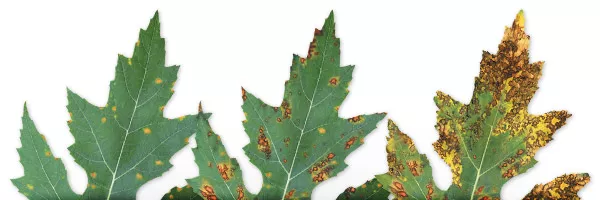
General: About calcium
For plant as well as animal life, calcium is an essential element; calcium is found in many structures from bones and protective shells to eggshells and cellular membranes, just to name a few. Muscles and nerves do not function without calcium. The name calcium derives from the Latin calx or calcis meaning stone. In its pure form, it is a silver colored metal that is a little harder than lead but easy to bend. The metal ignites when heated and reacts very strongly to water and acids. Calcium is found everywhere in the world; 3.64% of the earth’s crust consists of calcium. The degree of hardness in hard water and soft water is mainly determined by the quantity of dissolved calcium salts. 2
A calcium deficiency in plants
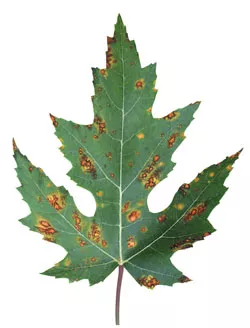
Calcium is mainly transported through the plant by the up-ward flow of sap. In the case of a calcium deficiency in plants, the older, larger leaves will show the first symptoms of deficiency. It often affects the leaves just above the bottommost leaves (just like with a magnesium deficiency). Beginning calcium issues show a distortion in the growth of the older leaves which will twist and curl in most plants. An advanced state of calcium deficiency is recognized by the occurrence of yellow/brown spots, which are often surrounded by a sharp brown outlined edge3. In addition, the growth is curbed and in serious cases the tops are smaller than normal and do not close. The result of this is easy to predict: a greatly reduced yield.
Development of a deficiency
When a calcium shortage is the case, you will find your plant going through the next cycle:
- The yellow/brown spots surrounded by a sharp, brown outlined edge that are found on the leaves, are characteristic of a calcium deficiency. The symptoms of a calcium deficiency often appear quickly; within one or two weeks of the first spots being visible on the older leaves. The spots usually start as small, light brown specks (edema or oedema) that increase in size over time.
- After two weeks, the older leaves show ever increasing spots. The spots often appear at the edge of the leaves, as is the case with a potassium deficiency or with scorch symptoms. Nevertheless, the differences between a calcium deficiency and a potassium deficiency are in most cases well distinguishable; with a calcium deficiency the spots have a sharp outline and do not originate exclusively at the edge of the leaves. A lag in development is often already noticeable within a week.
- Sometimes the growing points will wrinkle up and around the fruits you will find thin, small leaves that are not spotted.
- The older leaves die off slowly and yellowish cloudy spots may appear around the necrotic spots. The older the leaf, the more serious are the symptoms.
- Flowering is also hindered and slowed: Fruits stay small.
Reasons for a deficiency
Several things can be the cause of a calcium deficiency, like:
- Insufficient or incorrect fertilization.
- Culture on calcium fixing soil.4
- An excessive amount of ammonium, potassium, magnesium and/or sodium in the root environment. The absorption is curbed mostly by ammonium and least by sodium.
- Problems with the evaporation caused by an excessively high EC value or by excessively high or low relative humidity.5
- An overall issue with irrigation and water transport within the plant.
Solutions to resolve a calcium deficiency in plants
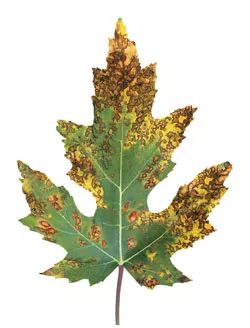
- Go to your local shop for advice. They should have the expertise and right products available to help you overcome this problem. A correctly formulated fertilizer should contain sufficient calcium.
- If the EC value (Electrical Conductivity, why it matters) of the substrate or the soil is too high, it can be rinsed (leached) out easily with pure (and if necessary) acidified water.
- If the soil contains insufficient amounts of calcium, then it can be applied in the form of dolomite or hydrated lime, calcium sulfate, earth foam, potassium siliceous lime, magnesia siliceous lime, Thomas (basic) slag, triple super phosphate or lime nitrate. Be careful with fertilizers containing chloride, and be very careful with any of these mentioned products (also if you're growing on recirculating systems) because only dolomitic limestone offers less chance of burning the plants or applying additional nutrient elements that will change the overall fertility realm of the crop.
- Additional calcium can be applied through the nutrient solution by means of liquid lime fertilizers such as a calcium nitrate solution. With an excessively acidic soil, lime milk can be used to increase the pH, but be careful, it is a suspension of hydrated lime and reacts fast which could lead to burning of established crops.
- Use an appropriate soil that is not too acidic. Acidic soil often contains insufficient amounts of lime. Good pre fertilized potting soils/soilless mixes and Coco substrates are already limed or pH adjusted.6
Footnotes
1. Calcium is responsible for the stability and activity of the plant tissues and regulates (together with other substances) the inflow and outflow of substances in cells and tissues. One role of calcium is to stabilize the pectin of the middle lamellae in the cell wall. While stabilizing the structure of the cell wall, it also maintains the integrity of the membrane structure.
2. It concerns calcium carbonate, CaCO3, a white, sometimes colored rock or powder that is almost insoluble in water. Scale mostly contains a considerable amount of calcium carbonate. The degree of hardness of tap water is not only determined by the calcium concentration, but also by the magnesium concentration of the water. The degree of hardness can differ greatly from place to place.
3. The yellow / brown spots are the result of an increased permeability of the cell membrane, which causes the release of pectinase (an enzyme) amongst other substances that can destroy the cell wall. The cells come loose from each other and burst open.
4. Calcium fixation can occur, for example with un-buffered coco and with humus or clay-rich soils. These soils tend to bond with lime and other bivalent cations.
5. An excessively high EC value in the root environment or a very low or very high humidity of the plant environment curb the evaporation. As a result of this, the upward flow of sap decreases and transport of calcium will be strongly reduced. A deficiency is often seen at the places with the lowest evaporation, such as the older leaves and the fruits.
6. Peat is often added to the soil to loosen the soil and aerate it. As this substance is acid, the pH of the soil is increased by adding a certain amount of lime.

